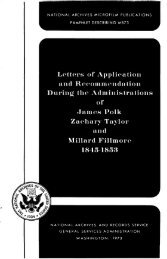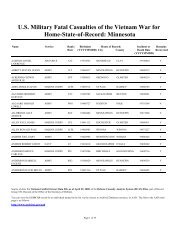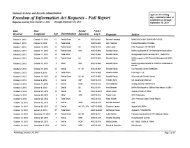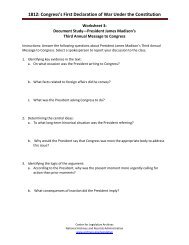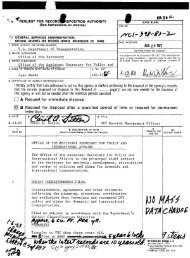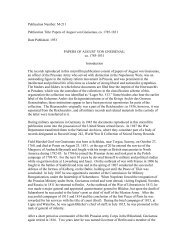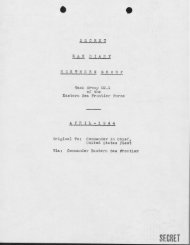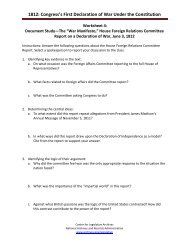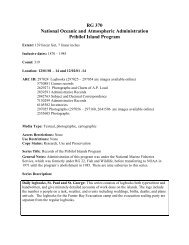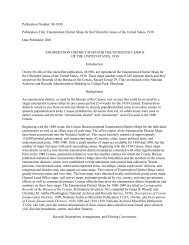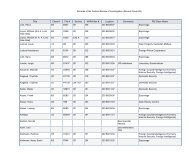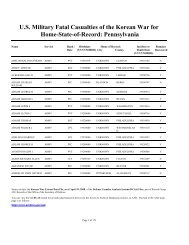HITLER'S SHADOW - National Archives and Records Administration
HITLER'S SHADOW - National Archives and Records Administration
HITLER'S SHADOW - National Archives and Records Administration
Create successful ePaper yourself
Turn your PDF publications into a flip-book with our unique Google optimized e-Paper software.
to former colleagues, “the most capable man the local Gestapo had in the leftist<br />
political field after 1933.” At first, Michel was unwilling to help owing to “the<br />
harsh treatment he allegedly received during his internment in Ludwigsburg….”<br />
Kahn noted that, “he was very cold toward this agent when the first contacts were<br />
made.” Kahn persevered. “Only after many visits,” Kahn reported on December<br />
19, 1949, “did [Michel] slowly warm up <strong>and</strong> begin to talk.”<br />
“You think that we had the Mannheim KPD penetrated,” Michel told Kahn in<br />
mid-December, “but that is not the case. We had no penetration in Mannheim at<br />
any time from 1933 to 1945.” “We had some lucky breaks in Mannheim,” Michel<br />
continued, “<strong>and</strong> were able to get some good cases, but we did not get them through<br />
any ‘Spitzels’ [police spies] whom we had placed within the party.” Michel said that<br />
the Mannheim Gestapo depended on routine denunciations. “The Gestapo,” he<br />
said, “had at times some voluntary informants who did not like some person, <strong>and</strong><br />
from these leads, we could occasionally get a fairly good case.” The Gestapo arrested<br />
the occasional KPD functionary <strong>and</strong> then “worked on him” until he gave up more<br />
names of active KPD members. This, Michel said, was how the Mannheim Gestapo<br />
destroyed the communist resistance circle under Georg Lechleiter in 1942, a case<br />
that led to 31 arrests <strong>and</strong> 19 executions including that of Lechleiter himself. 35 Michel<br />
told Kahn that he knew many KPD functionaries in the Mannheim area, but was<br />
“allegedly not able to give any names as to who could be recruited as informants.” 36<br />
Kahn repeatedly contacted Adolf Gerst, the former head of the Mannheim<br />
Gestapo, who was subject to murder charges. Gerst later received a seven-year<br />
sentence for aggressive interrogations that ended in death. 37 Gerst claimed little<br />
contact with former informants because, as he said, “his agents usually contacted<br />
the informants.” Kahn reported that he “made a strenuous effort” to obtain<br />
employment for Gerst’s son, also named Adolf, who had just been released from<br />
prison by the French for his role in the Gestapo in Saarbrücken. Kahn reported<br />
that “this did not persuade Gerst to give information….” 38<br />
In August 1949 the CIC learned that Alois Bischoff, “an expert on<br />
communism,” had been from late 1943 to 1945 the head of Mannheim’s<br />
Referat-N <strong>and</strong> “was considered the key, <strong>and</strong> most capable man of this Referat.”<br />
Kahn located him after his denazification hearings. Bischoff was unemployed<br />
<strong>and</strong> still a believer in <strong>National</strong> Socialism––he had joined the Party in 1927. 39<br />
Bischoff refused to incriminate himself or give information on right-wing<br />
groups “because of his former party activities <strong>and</strong> his belief in that party.” But<br />
42 | New Materials on Former Gestapo Officers



